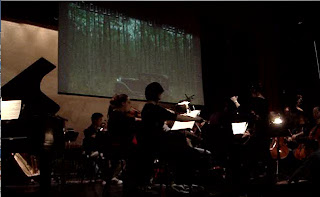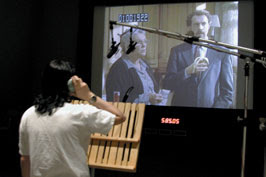
Alright, I'm back folks! I hope you had a productive day last week when I was gone and that you were able to catch up on missing work. Now that we're all together again, we're going to get back into working on film scores.
Today, I want you to pick two more short clips that you're going to work with (in separate Pro Tools sessions). You can find the clips in Media Share>Class Materials>Movie Trailers>Film Score.
Please do the following:
- Check out all three clips and pick two that you want to work with. Copy them to your hard drive.
- Go into the same folder and get the file called Film Scoring_writeup. odt (Media Share>Class Materials>Movie Trailers>Film Score>Film Scoring_writeup.odt). Copy it to your hard drive and open it.
- Fill out the worksheet for the first film.
- Save the document as your name_fs writeup.
- Start a new Pro Tools session and Import the first movie clip into it.
- Create an original score using Rewire and/or other soft synths. (minimum 3 instruments)
- When you are done, save the PT session as your name_film score 1.
- Bounce the clip with your original score as a Quicktime movie called your name_film score 1.
- Put a copy in the Student Work folder on the Media Share.
- Repeat the above steps for your second film clip. Be sure to label both the PT Session and the Quicktime movie for this one as your name_film score 2.
- Turn in the fs writeup document to the Student Work folder.















